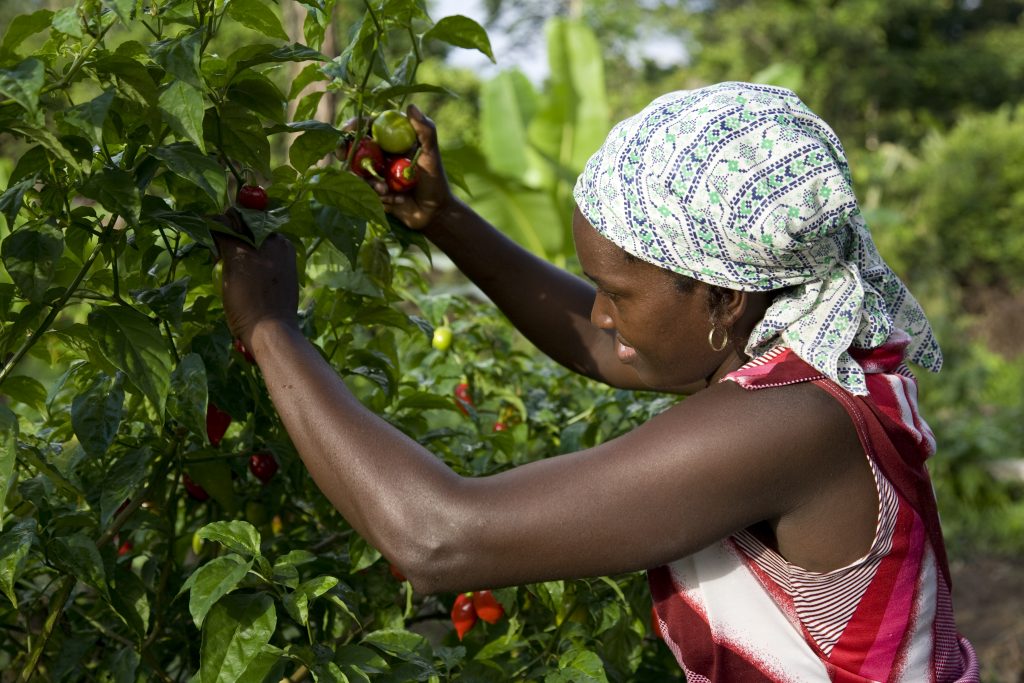
The global pandemic has emphasized the importance of governments proactively building resilience to shocks and stresses—whether they are caused by COVID-19 or climate change.
Despite the challenges and delays that COVID-19 has caused, countries continue to make progress on developing updated and enhanced Nationally Determined Contributions (NDCs), which outline each country’s contribution towards the objectives of the Paris Agreement—enough to secure the temperature goal of “well below 2°C.”
To date, 72 countries* have submitted either an updated version of their first NDC or a second NDC and are now using the opportunity to update and align their adaptation-related commitments based on their National Adaptation Plan (NAP) process.
Though not mandatory, many countries chose to include adaptation commitments already in their first NDCs (131 of the 175 countries included adaptation content), reflecting their ambition and the importance of building resilience to climate change alongside mitigation efforts. Importantly, this trend emphasizes how much of a priority adaptation is for developing countries, many of which emit greenhouse gases on a much smaller scale than industrialized countries while also being far more vulnerable to climate risks.
Many countries have initiated and are advancing their NAP processes to identify and address their medium- and long-term priorities for adapting to climate change.
In Deutsche Gesellschaft für Internationale Zusammenarbeit’s (GIZ) 2017 analysis of the first round of NDCs, 131 out of 176 countries opted to include adaptation in their first NDC, but only 57 NDCs (44%) with an adaptation component referenced the country’s NAP process, a trend that appears to be picking up in the new round of NDCs.
In the process of updating and enhancing NDCs, alignment with the NAP process provides an additional opportunity to make a country’s NDC more strategic and well-coordinated for implementation. The NDC can provide high-level commitment on adaptation (the “what”), while NAP processes can be a vehicle for identifying the “how” by elaborating adaptation actions, monitoring and evaluation systems, and strategies for implementation. Moreover, alignment of NDCs and NAPs facilitates better coordination and policy coherence, which is vital for effective implementation.
We took a look at some country examples so far.
Suriname
The adaptation chapter of Suriname’s second NDC draws on their 2019 NAP, explaining: “The NDC is a strategic document guiding what climate action the government is taking, with the 2019 National Adaptation Plan (NAP) describing in detail how the NDC commitments are going to be achieved.”
Suriname’s adaptation priorities in the NDC draw from the NAP, while the NAP process is a vehicle for implementing the vision and commitment set out in the NDC.
Vietnam
Vietnam’s updated NDC—which notes that the damage caused by natural disasters in the country between 1995–2017 was approximately USD 990 million (at 2010 values)—works in tandem with their NAP, which was approved by the Prime Minister’s office in July 2020. It explains the relationship between the NDC and NAP: “The adaptation component [of the NDC] identifies strategic tasks … these strategic tasks are consolidated in the National Adaptation Plan (NAP), and the National Action Plan on Climate Change. The NAP implementation results will be used as inputs for the review and evaluation of the NDC’s adaptation component.”
Vietnam identified clear co-benefits in adding adaptation components to their NDCs. According to Mr. Pham Van Tan, Deputy Director General for Climate Change at the Ministry of Natural Resources and Environment, the inclusion of adaptation within their new NDCs will not only strengthen the NDCs but also align them with national sustainable development efforts.
Like Suriname, Vietnam’s NDC sets out a high-level ambition to be implemented via the NAP process. It also signals a strong interest in aligning the monitoring and evaluation of national adaptation.
Moldova

Moldova’s updated first NDC also draws on its NAP for its adaptation component, writing that this adaptation component “is built upon the experience gained from the implementation of the first cycle of the National Adaptation Plan (NAP-1) (2014-2017)” and that the second NAP will be closely linked to the NDC’s adaptation goals.
The NDC also notes principles such as gender and social inclusion that they will seek to achieve through the NAP process.
Republic of the Marshall Islands (RMI)
The Republic of the Marshall Islands was the first country in the world to submit an updated NDC. This 2018 enhanced NDC also had a strong link to the NAP process, committing to develop a NAP in order to set out priority adaptation actions and scale up financing for adaptation, citing health, gender, education, and public awareness-raising as among the key considerations. RMI’s NAP process is well underway, with strong links to the NDC Working Groups to ensure the complementarity of the processes.
Chile
Chile’s enhanced NDC also links to their 2017 NAP, which the NDC notes will play the role of “coordination of climate action on adaptation at national level.”
As Mr. Alfonso Enrique Galarce Jaramillo (Head of Climate Financing and Negotiation Department, Climate Change Division, Ministry of the Environment, Chile) stresses, “Chile had to suffer a drought that has been going on for more than 10 years, part of which can be explained by climate change. Therefore, we are emphasizing this component of adaptation.”
In addition, he elaborates further that the overall goal of the NDCs and “the actions that were developed in mitigation and adaptation in the means of implementation must aim to improve quality of life. This is the focus.”
What to Watch For
Countries making these links and building alignment between their NAPs and NDCs is good news. As more countries submit their enhanced NDCs, this will be a trend to watch!
There is no one-size-fits-all approach: some countries that already have a NAP are using it to develop the NDC’s adaptation section, like Suriname; some are starting with an enhanced NDC and using it to set out a clear mandate for the NAP process to draw on, like RMI.
With the high level of political support demonstrated at the Climate Adaptation Summit in January and the launch of the Adaptation Action Agenda, the links countries are making between their NDC adaptation components and NAP processes will be critical to building a more integrated and coherent approach to achieving resilience-building goals.
Read more about NDC-NAP alignment.
Note
* According to the Climate Action Tracker, 71 countries (including the 27 European Union member states, which jointly prepared their first and updated NDCs) submitted an update of their first NDC or a second NDC by the official deadline of December 31, 2020. More countries are continuing to submit updates, and 72 is the number as of January 27, 2021. For the latest information, please visit the United Nations Framework Convention on Climate Change’s NDC registry.